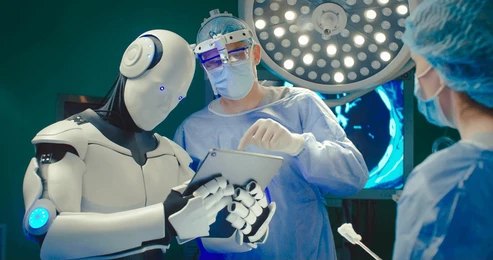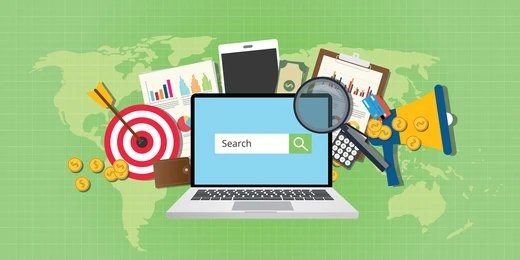Introduction
The future of robotics is an interesting and transformative journey, one that holds the potential to revolutionize each aspect of our everyday lives. From healthcare and manufacturing to our houses and places of work, robots are poised to reshape how we function as people and as a society. But what precisely does the destiny of robotics seem like, and the way will it impact the sector we know?
As we stand at the cusp of the Fourth Industrial Revolution, robotics is increasingly becoming an integral part of our technological landscape. This article explores the predicted trends in robotics, examining the important trends and improvements so as to define the future of robotics.
A New Era of Robotics
Robots have come a long way considering that their inception in the mid-twentieth century. Initially limited to manufacturing traces and managed environments, robots at the moment are advancing into extra numerous and interactive roles. The destiny of robotics isn’t just about machines taking on particular obligations; it’s far more about robots turning into smarter, self-sustaining, and integrated into the fabric of our normal lives.
- Autonomous Robots: The Next Step in Robotics Evolution
One of the maximum thrilling developments in the future of robotics is the development of independent robots. These robots will now not first-rate carry out pre-programmed obligations but also be able to make choices based on real-time data and environmental factors.
Autonomous robots are predicted to play key roles in a variety of industries, in conjunction with healthcare, logistics, and agriculture. In healthcare, for instance, self-reliant robots can also need to help in surgeries, carry out diagnostics, and supply medication. In logistics, they might manage inventory management, package deal sorting, or even final-mile shipping.
With advancements in synthetic intelligence (AI), machine learning, and sensors, those robots will become more capable of adapting to changing environments and performing tasks with growing efficiency and precision.
- Human-Robot Collaboration: Enhancing Efficiency and Safety
In the future, robotics will no longer be most effective when working independently but will even collaborate with human beings to enhance efficiency and protection. Human-robotic collaboration (HRC) is a developing discipline in which robots work alongside human workers to achieve common goals.
In manufacturing, robots are already being used to help people in acting heavy lifting, precision tasks, and repetitive actions. This reduces the bodily strain on humans, lowers the chance of damage, and increases productivity. For example, cobots (collaborative robots) are already being employed in meeting tasks, assisting employees with duties together with selecting and putting additives or welding with incredible accuracy.
As the robotics era advances, the destiny of robotics will see additional industries adopting HRC solutions. In healthcare, robots will work alongside medical specialists, helping in surgeries, rehabilitation, and patient care, improving the quality of care at the same time as decreasing human errors.
- Robotics in Healthcare: A Lifesaving Revolution
The healthcare region is one of the most promising areas for the future of robotics. Robotics in healthcare already plays an essential role in surgical procedures, diagnostics, and rehabilitation, but the future will deliver even greater state-of-the-art answers.
Robotic-assisted surgical procedures, along with those carried out with the da Vinci Surgical System, allow for minimally invasive processes with better precision and faster recovery instances. In the future, robots can be capable of performing complicated surgeries autonomously, guided by means of AI and real-time imaging.
Robots may also be instrumental in elder care, imparting assistance with everyday activities, administering medication, and even offering companionship. These robots ought to considerably improve the satisfactory of life for the aged and people with disabilities, allowing them to live greater independently while keeping a better preference of care.
Furthermore, robotics will play a massive role in drug improvement and testing. Robots can fast analyze vast amounts of information, speeding up the discovery of recent remedies and medicinal drugs. In the long term, robots may want to even deliver personalized remedies tailor-made to a character’s precise needs.
The Future of Robotics in Manufacturing and Industry
Manufacturing has always been a primary hub for robotics; however, in the future, we will see a far extra profound impact. The introduction of Industry 4.0, which mixes robotics with the Internet of Things (IoT) era, artificial intelligence, and big data, will result in fully automatic and smart manufacturing strains.
Robots within the production zone will continue to carry out repetitive duties, but with increasing sophistication. They might be capable of adapting to modifications in manufacturing schedules, managing a wider variety of merchandise, or even working with humans in methods that maximize performance and safety.
In the automobile enterprise, as an example, robots will be used to bring together automobiles with extra speed and precision. But past that, robots will be involved in designing new automobiles, trying out prototypes, or even dealing with upkeep tasks. The destiny of robotics in production will no longer simply automate processes, but will also optimize the whole production chain, from supply management to niche management.
Robots in Daily Life: A Seamless Integration into Society
As robots emerge as greater superior, they may pass from specialized environments to ordinary life. In homes, robots will deal with chores like cleaning, cooking, or even personal care. Household robots, such as vacuum cleaners and lawn mowers, are already not unusual, but the future will bring extra multifunctional robots that could adapt to various obligations, from serving as private assistants to imparting companionship.
Imagine an international in which robots are not just machines, but essential contributors to the family. They could assist with childcare, assist the elderly with mobility troubles, or serve as personal safety systems, tracking the home for unusual activity. The idea of a smart home, powered by robots and AI, will become increasingly more practical, making everyday lifestyles extra handy and green.
- Robotics in Space Exploration
The future of robotics will not be confined to Earth. In the approaching years, robots will play a crucial role in space exploration. Robotic rovers and drones have already been deployed on Mars and other celestial bodies, accumulating statistics and performing experiments. But the destiny of robotics in the area of exploration will move beyond record collection.
- Ethical Considerations and Challenges
While the future of robotics is highly promising, it will moreover raise crucial moral and societal questions. The rise of independent robots, AI, and system mastery will require careful consideration of ways these technologies need to be governed.
One of the primary concerns is the capacity for job displacement. As robots tackle more responsibilities historically performed by means of humans, there could be worries approximately mass unemployment and the future of work. It is vital that society addresses those challenges by investing in reskilling and upskilling programs, making people ready for new roles in a robotic-assisted economic system.
Additionally, there are concerns approximately privacy, security, and duty. As robots come to be greater autonomous, making sure that they function thoroughly and ethically may be essential. The improvement of regulatory frameworks and guidelines can be necessary to control the deployment of those technologies in a manner that blessings society as a whole.
Conclusion: A Transformative Future Ahead
The destiny of robotics is both thrilling and uncertain. As generations continue to develop, robots become an indispensable part of our daily lives, transforming industries, healthcare, and even the manner we engage with each other. From self-sufficient robots to human-robotic collaboration, the future holds tremendous promise.
However, as we glide closer to this robot-assisted future, it is essential that we address the moral and societal annoying conditions that accompany these improvements. By preparing for the modifications ahead and embracing innovation, we’re capable of ensuring that the destiny of robotics can be one of improvement, safety, and prosperity for all.
As robotics continues to adapt, it’ll surely play a pivotal role in shaping the sector of tomorrow. The question isn’t always if robots will change destiny; however, how they will achieve this, and the solution to that question lies within the endless potential of robotics itself.


